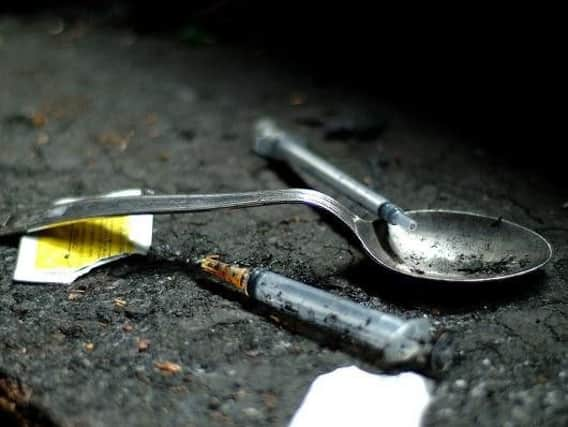Thousands of drug addicts living in Wigan


The most recent figures released from Public Health England show that by 2015, at least 2,100 living in the borough were addicted to opiates or crack, with estimates suggesting that this figure could be as high as 2,600.
Data spanning a four-year period also reveals that this number has soared with hundreds more Wiganers addicted to the drugs in 2015 than there were in 2011.
Advertisement
Hide AdAdvertisement
Hide AdProf Kate Ardern, director of Public Health at Wigan Council, said: “The rise highlighted in these recent estimates is not statistically significant in Wigan Borough and should always be used in conjunction with local commissioning data.
“In Wigan Borough we have a very strong offer of support and high levels of engagement with drug users through the Wigan and Leigh Recovery Partnership, working with young people, adults and their families to provide information and treatment to anyone affected by drugs and alcohol.”
The council explained that, although it is difficult to determine, there are a number of reasons for a potential increase in the estimated amount of drug users in the borough, one being that the borough is engaging with more people suffering from drug problems than they did in 2011.
The extensive study addressed a number of demographic factors including age, sex and drug of choice, to give a detailed profile of Wigan’s addict population.
Advertisement
Hide AdAdvertisement
Hide AdShocking figures reveal that the fraction of the borough’s youth hooked on the potentially life-threatening drugs is much higher than that across England as a whole.
More than four (4.7) in 1,000 Wigan youngsters is known to be taking crack or opiates, whereas the regional average lies at 3.9 and the national average is 4.4.
More than 200 youngsters, between the age of 15 and 24 years old, had reported taking heroin or crack cocaine in a 12-month-period between 2010 to 2011, a number which had dropped to 175 in the most recent study.
But the age group most ravaged by hard drug addiction is the 35 to 64 year olds, with the majority of drug users within this category.
Advertisement
Hide AdAdvertisement
Hide AdThis older generation group is by far the worst-hit by drug addiction, with more than 1,400 of the bulk of addicts sitting within this category.
A vast difference was also revealed in the number of male and female users, with more than 1,400 men addicted to opiates compared to around 390 women.
Prof Ardern added: “We are always looking for innovative ways in which we can address drug issues in the borough. For example through the drug early warning system.
“The Greater Manchester wide operation gives different organisations the chance to share information and details of incidents swiftly to help draw up patterns of drug use in the local and surrounding areas.
“It also helps frontline services get the most up-to-date information.
“The work is a strong example of how the Deal for Health and Wellness is being put into action every day.”